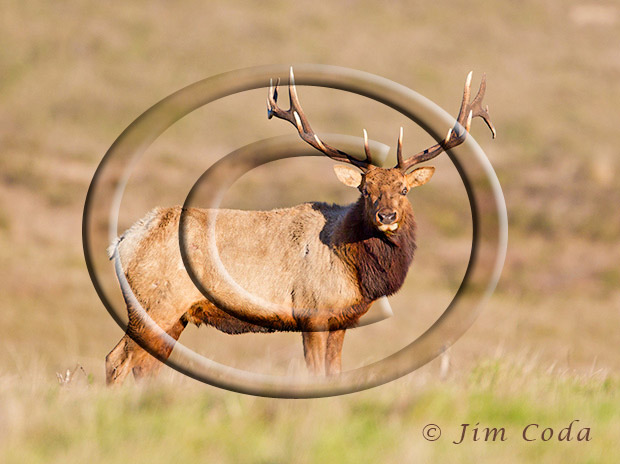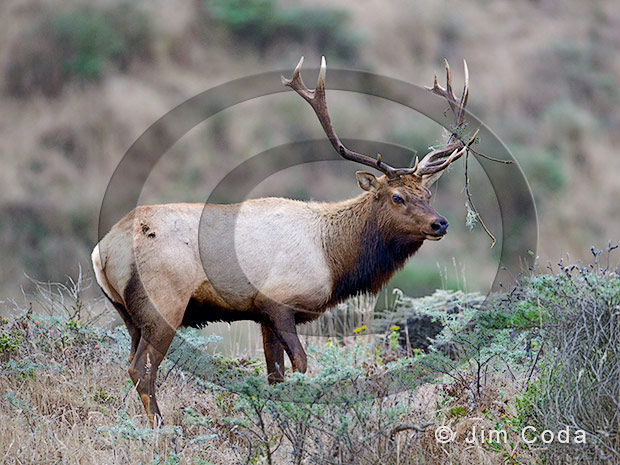What’s Wrong With This Bull Elk?

I was at Point Reyes yesterday afternoon. It was my first time out there in quite a while. There’s been enough rain that most ground cover has turned a nice, rich green. I saw a coyote on the H Ranch which is a fairly common place to spot a coyote, and Handsome Bob, the bobcat I so named because he has such a striking coat of spots, was in his accustomed place just outside the tule elk reserve. (For a post about Handsome Bob click here.) There were a number of elk on the D Ranch (by Drake’s Bay). The bulls were in one group before the ranch complex and the cows and calves were in another group past the ranch complex. At the elk reserve on the Tomales Peninsula some bulls were with the cows and they were acting like the rut is still on there.
This big bull (7×8 points) was in his accustomed place for late afternoons which is just past the Kehoe Ranch complex in the swale on the right side of the road. He’s one of about 5 bull elk that somehow got out of the reserve some time in the past several years. He seems to be alone every time I see him. The other four seem to stay together.
Yesterday was the first time I noticed that there is something wrong with his coat. My guess is that he has mange/scabies, but I’m no expert. I did a quick google search and found that elk do get mange. For a study done regarding mange at the National Elk Refuge (NER) at Jackson Hole, click here. Mange is caused by a mite that burrows very deep into the skin. It can cause death due to hair loss and hypothermia. The NER report states that bulls die of it at a much higher rate than cows and it was thought that the higher mortality rate was due to the debilitated state bulls are in at the start of winter due to the fall rut. The report also states that if hair loss extends from the neck to more than one quarter the length of the back the case is considered severe.
Mange is spread by contact. I have no idea to what extent the elk herd at Point Reyes has a mange problem, but since this bull is outside the reserve and doesn’t even seem to spend time with the other four bulls, his case wouldn’t seem to be cause for concern for the rest of the herd. I also have no idea what his prognosis is or how he got the mange (if that’s what it is) given his solitary habits. At least he doesn’t have to deal with cold winters like the elk at the National Elk Refuge.


